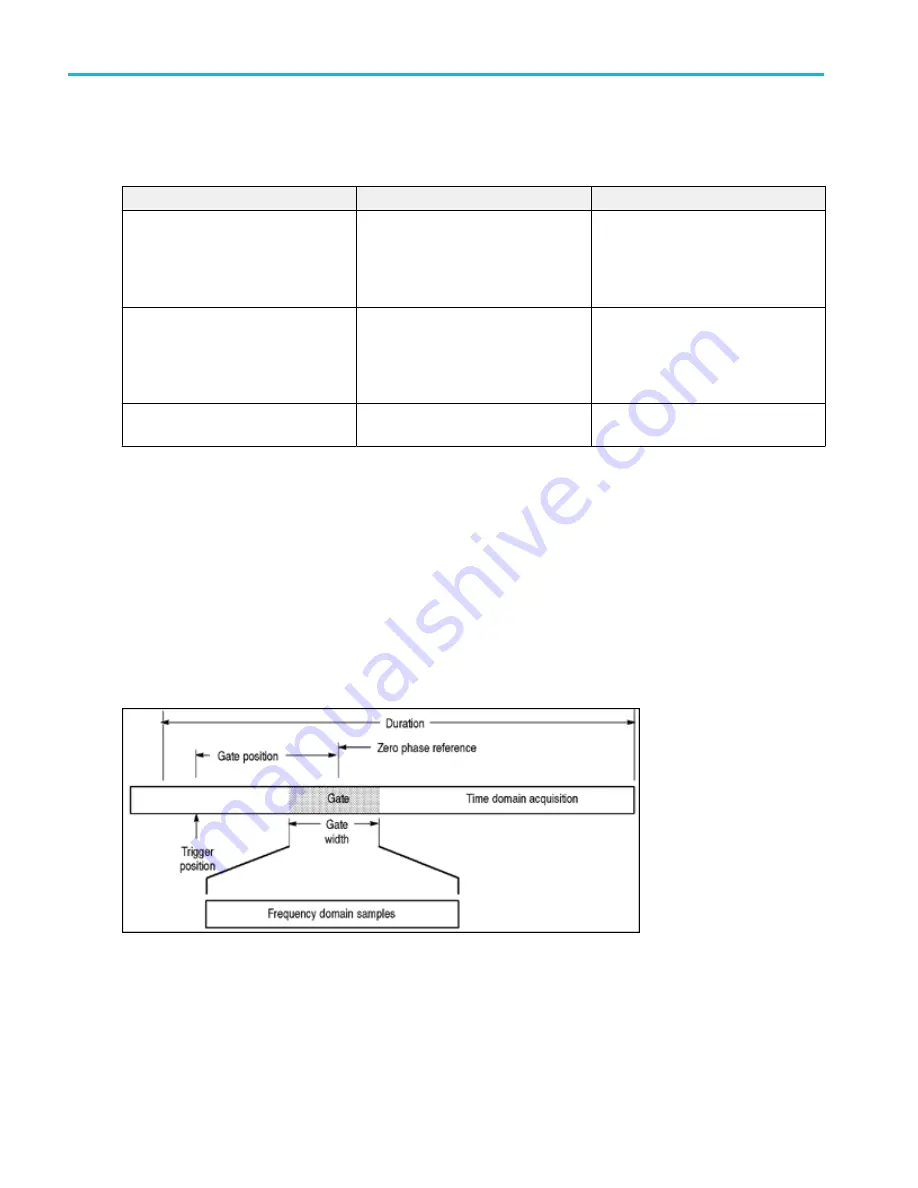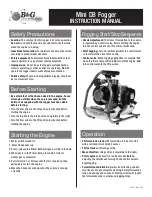
FFT window characteristics
Each FFT window is a trade-off between frequency resolution and magnitude accuracy. What you want to measure and your
source signal characteristics help determine which window to use. Use the following guidelines to select the best window.
FFT window
Characteristics
Best for measuring
Rectangular
Best frequency, worst magnitude
resolution. This is essentially the same as
no window.
Transients or bursts where the signal
levels before and after the event are
nearly equal.
Equal-amplitude sine waves with
frequencies that are very close.
Hamming, Hanning
Better frequency, poorer magnitude
accuracy than Rectangular. Hamming has
slightly better frequency resolution than
Hanning.
Sine, periodic, and narrow-band random
noise.
Transients or bursts where the signal
levels before and after the event are
significantly different.
Blackman-Harris
Best magnitude, worst frequency
resolution.
Predominantly single frequency signals to
look for higher order harmonics.
You can also determine the best window empirically by first selecting the Rectangular window, and then selecting (in the
following order) the Hamming, Hanning, and Blackman-Harris windows until the frequency components merge. Use the window
just prior to where the frequencies emerge for the best compromise between resolution and amplitude accuracy.
■
■
Time domain gating
You can use time domain gating to select a specific segment of your signal for spectral analysis. Two controls, gate position and
gate duration, determine the location and size of the gate.
The resulting spectrum corresponds to the frequency components of the signal in the gated segment.
Time domain gating is inversely proportional to the resolution bandwidth of the spectral waveform. The narrower the gate, the
larger the resolution bandwidth and the lower the frequency resolution. To obtain the best frequency resolution, use as wide a
gate as possible.
■
■
Math setups
258
DPO70000SX, MSO/DPO70000DX, MSO/DPO70000C, DPO7000C, and MSO/DPO5000B Series
Summary of Contents for DPO2304SX
Page 1: ...Tektronix Digital Phosphor Oscilloscopes Printable Help P077006219 077 0062 19...
Page 2: ......
Page 3: ...Tektronix Digital Phosphor Oscilloscopes Printable Help www tek com 077 0062 19...
Page 32: ...Introduction xxviii DPO70000SX MSO DPO70000DX MSO DPO70000C DPO7000C and MSO DPO5000B Series...
Page 130: ...Cursor setups 98 DPO70000SX MSO DPO70000DX MSO DPO70000C DPO7000C and MSO DPO5000B Series...
Page 198: ...MagniVu setup 166 DPO70000SX MSO DPO70000DX MSO DPO70000C DPO7000C and MSO DPO5000B Series...
Page 212: ...Display setups 180 DPO70000SX MSO DPO70000DX MSO DPO70000C DPO7000C and MSO DPO5000B Series...
Page 300: ...Math setups 268 DPO70000SX MSO DPO70000DX MSO DPO70000C DPO7000C and MSO DPO5000B Series...
Page 408: ...MyScope setups 376 DPO70000SX MSO DPO70000DX MSO DPO70000C DPO7000C and MSO DPO5000B Series...
Page 510: ...Trigger setups 478 DPO70000SX MSO DPO70000DX MSO DPO70000C DPO7000C and MSO DPO5000B Series...
Page 548: ...Vertical setups 516 DPO70000SX MSO DPO70000DX MSO DPO70000C DPO7000C and MSO DPO5000B Series...
Page 605: ...Utilities DPO70000SX MSO DPO70000DX MSO DPO70000C DPO7000C and MSO DPO5000B Series 573...
Page 606: ...Utilities 574 DPO70000SX MSO DPO70000DX MSO DPO70000C DPO7000C and MSO DPO5000B Series...
Page 920: ...Index 888 DPO70000SX MSO DPO70000DX MSO DPO70000C DPO7000C and MSO DPO5000B Series...
















































